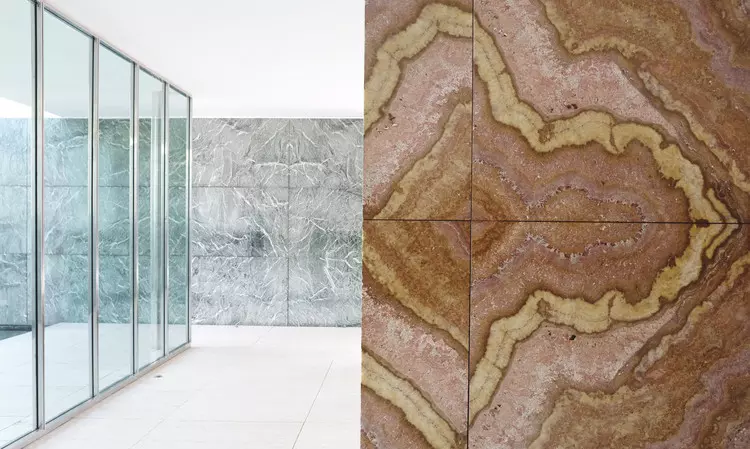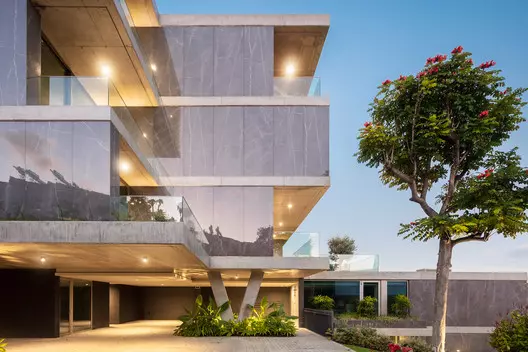Marble – a material that has witnessed the creation of Michelangelo's sculptures, adorned ancient Greek temples, and graced the interiors of castles and palaces. Its beauty and versatility have left an indelible mark on the history of architecture and sculpture. Today, marble continues to captivate with its timeless elegance, making it a popular choice for both interior design and facade applications.
A Marvelous Creation
Marble, a metamorphic rock formed by the chemical reaction in limestone under immense pressure and temperature for thousands of years, is primarily found in regions where volcanic activity has occurred. The extraction process itself is a spectacle, taking place in nature reserves amidst large rocky mountains. Professional teams armed with specialized equipment bring out enormous blocks of marble, each weighing several tons.
 Image: Grupo Arca Showroom / Esrawe Studio. Image © César Béjar
Image: Grupo Arca Showroom / Esrawe Studio. Image © César Béjar
Sustainable Utilization
While marble extraction does have an impact on the environment, the industry ensures minimal wastage. The first piece of rock extracted, known as a bench or board, serves as the foundation for creating smaller blocks. These blocks are later sliced into various thicknesses for the production of countertops, floors, cladding, and other architectural elements. Even surplus pieces find purpose in the formulation of paving blocks or the manufacturing of granilites and marmorites. In fact, every part of the extracted marble is eventually utilized, with the finest sections reserved for larger, more expressive projects.

Aesthetic Splendor and Imitations
Marble's allure lies in its characteristic veins and a spectrum of potential shades, including white, gray, pink, green, and black. This natural beauty continues to inspire awe, leading to its extensive use in civil construction for interior coverings, floors, benches, and facades. In fact, the aesthetic prominence of marble has reached such heights that patterns imitating its design have become popular in porcelain and other materials.

A Plethora of Finishes
There are four main types of finishes for marble:
Raw
The marble is simply sawed off and left as it was when it was first removed from its deposit.

Polished
This is the most popular finish, where the surface is polished to replace the texture of the piece with a smooth appearance and gloss.

Tumbled
An intermediate finish that provides an opaque and smooth appearance while maintaining the natural color of the rock.

Brushed
This finish involves brushing the rock surface with diamond abrasive brushes, resulting in a slightly uneven surface and a subtle satin shine.

It is important to apply resin to marble to cover any natural imperfections and porosities.

Uniqueness and Distinction
Marble is often mistaken for granite, an igneous or magmatic rock formed from the consolidation of cooling molten magma. While marble boasts intricate veins, granite exhibits a grainy appearance. Additionally, marble is more porous, making it more susceptible to moisture absorption. It is precisely these unique designs, colors, and patterns that make marble highly sought after. The price of marble varies depending on the rarity and exclusivity of its colors.

Architectural Marvels
Let's explore a selection of architectural projects that showcase the versatility of marble across various elements.
Facades

Furniture

Flooring

Kitchens

Bathrooms

Marble's timeless charm, combined with its exceptional versatility and aesthetic appeal, make it a preferred choice for architects and interior designers alike. Whether adorning facades, enhancing furniture, beautifying flooring, or adding sophistication to kitchens and bathrooms, marble continues to exude elegance and elevate spaces to new heights.









